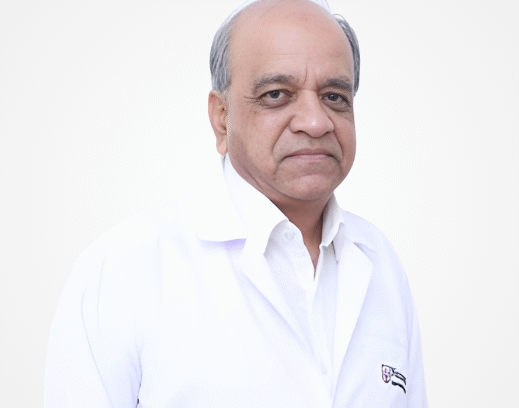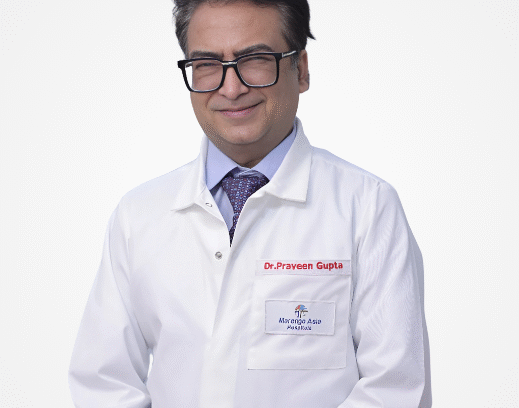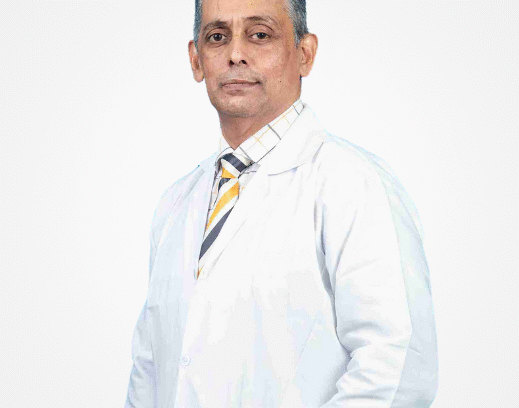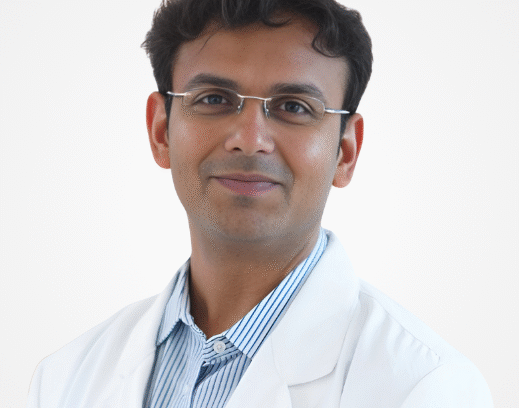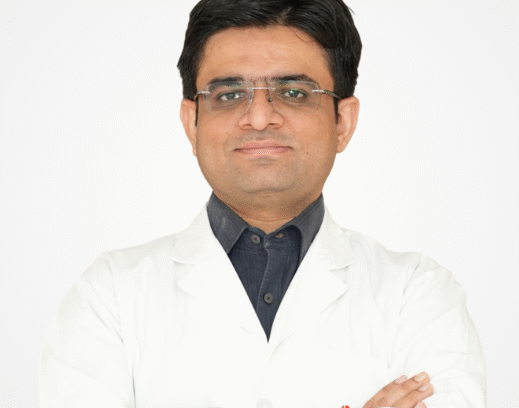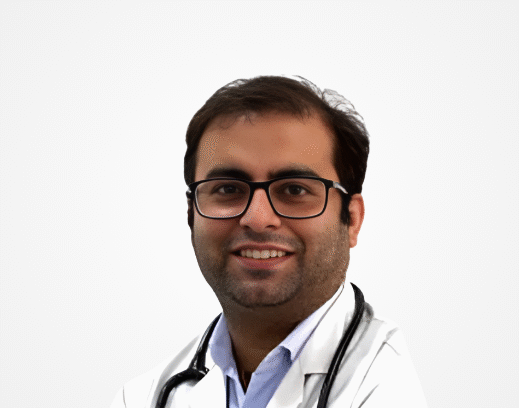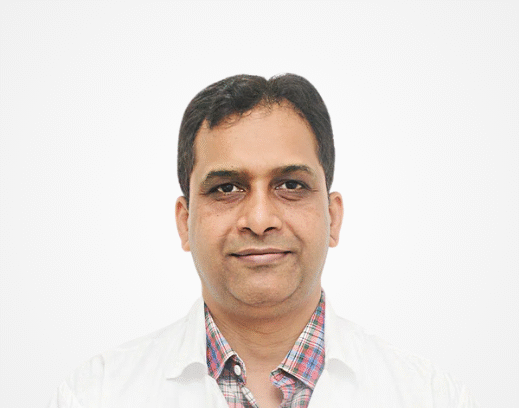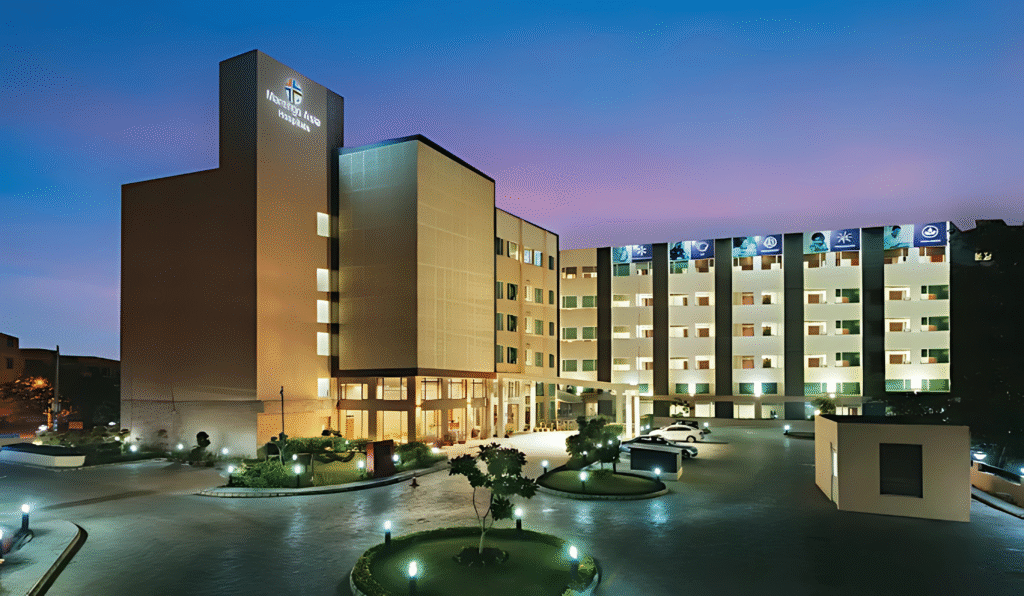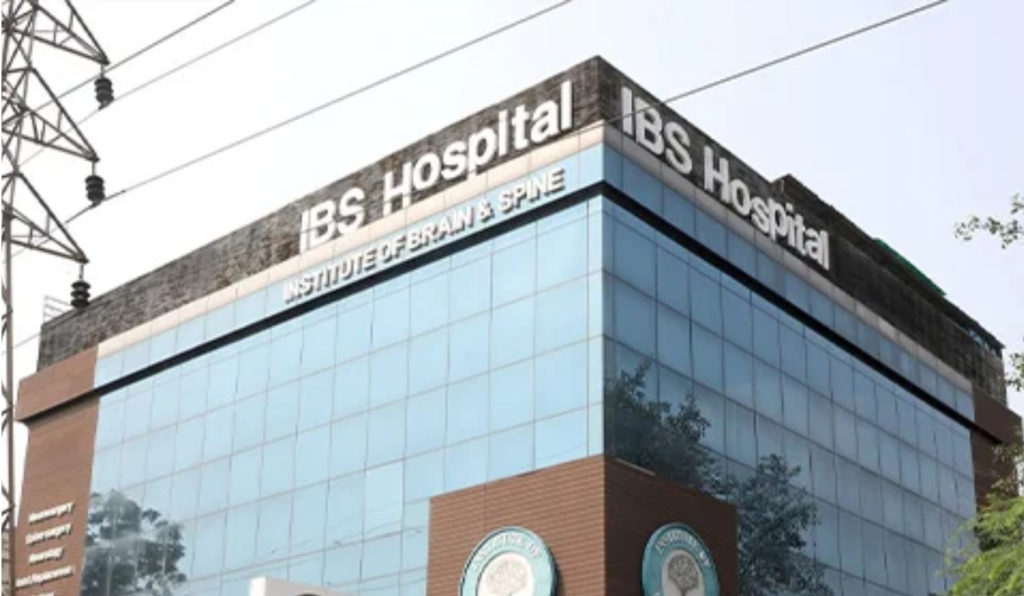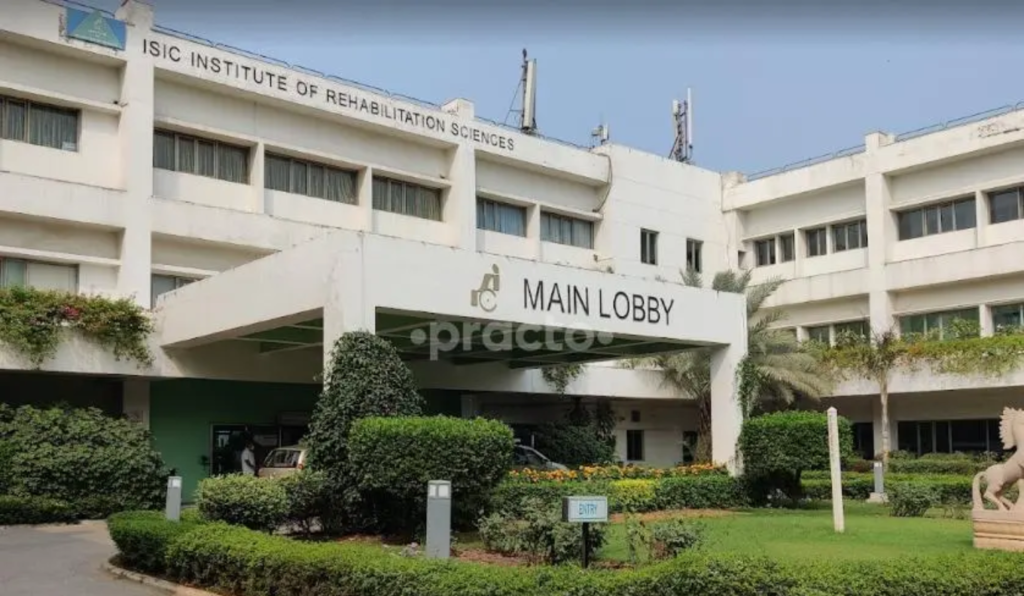Brain Stroke Treatment Cost in India

What is Brain Stroke?
A stroke occurs when the blood supply to part of the brain is interrupted or reduced, depriving brain tissue of oxygen and nutrients. Within minutes, brain cells begin to die. It is a medical emergency and prompt treatment is crucial. Strokes are broadly categorized into ischemic strokes (due to blocked arteries) and hemorrhagic strokes (due to ruptured blood vessels), each requiring different treatment approaches.
How Does Stroke Develop?
A stroke develops when the brain’s blood flow is disrupted, causing brain cells to die due to lack of oxygen.
Ischemic stroke occurs when blood vessels are blocked by clots or plaque buildup, often due to atherosclerosis or heart disease.
Hemorrhagic stroke happens when weakened blood vessels rupture, frequently from high blood pressure or aneurysms.
Transient Ischemic Attacks (TIAs), or mini-strokes, serve as early warnings and can precede major strokes.
Stroke development is often sudden, but long-term issues like unmanaged hypertension, obesity, and smoking silently increase the risk. The affected brain area determines what body functions are lost, such as speech, movement, or memory.
Causes and Risk Factors of Stroke
Stroke is a serious neurological condition that occurs when the brain’s blood supply is interrupted—either due to blockage (ischemic stroke) or bleeding (hemorrhagic stroke). This disruption deprives brain tissue of oxygen and nutrients, leading to cell death within minutes. Stroke is a leading cause of long-term disability and requires urgent medical attention.
Primary Causes of Stroke
Blood Clot (Ischemic Stroke): Blockage in the arteries supplying blood to the brain due to clots or atherosclerosis (narrowed arteries).
Bleeding in the Brain (Hemorrhagic Stroke): Ruptured blood vessels from high blood pressure, aneurysms, or head trauma.
Transient Ischemic Attack (TIA): A temporary blockage mimicking stroke symptoms but without permanent damage.
Heart Conditions: Irregular heart rhythms (e.g., atrial fibrillation) can lead to clots that travel to the brain.
Drug Use: Use of illicit drugs like cocaine or excessive alcohol consumption can cause sudden vessel rupture.
Risk Factors Contributing to Stroke
High Blood Pressure: The most significant risk factor, putting strain on blood vessels in the brain.
Smoking: Damages blood vessels, increases blood pressure, and raises clot formation.
Diabetes and High Cholesterol: Promote atherosclerosis, narrowing brain arteries.
Obesity and Physical Inactivity: Increase the risk of multiple underlying conditions like diabetes and hypertension.
Family History or Previous Stroke: Genetics or a history of TIA or stroke significantly raises future risk.
Symptoms of Stroke
A stroke occurs when blood flow to a part of the brain is interrupted or reduced. Symptoms appear suddenly and require emergency care.
Sudden numbness or weakness in the face, arm, or leg, especially on one side of the body
Confusion, trouble speaking, or understanding speech
Sudden vision problems in one or both eyes
Dizziness, loss of balance or coordination
Sudden severe headache with no known cause
Types of Stroke
This is the most common type of stroke, caused by a blockage in an artery supplying blood to the brain. It often results from blood clots or fatty deposits. Quick intervention is vital to restore blood flow and minimize brain damage.
Occurs when a blood vessel in the brain ruptures, leading to internal bleeding. It’s usually linked to high blood pressure or aneurysms and can cause more severe outcomes compared to ischemic stroke.
Also known as a “mini-stroke,” TIA is a temporary blockage of blood flow to the brain. Though symptoms resolve quickly, it’s a major warning sign for future strokes.
Includes Cryptogenic Stroke (unknown cause), Brain Stem Stroke (affecting vital functions), and Silent Stroke (without noticeable symptoms but causing damage over time).
Which Type of Stroke is the Most Dangerous?
Hemorrhagic stroke is considered the most dangerous type because it involves bleeding in or around the brain, leading to sudden pressure buildup, brain damage, and a higher risk of death or long-term disability.
Why Choose India for Neurology and Neurosurgery Treatment?
India has become a global hub for advanced neurology and neurosurgery treatments, offering a unique combination of cutting-edge medical technology, experienced specialists, and compassionate care. Patients worldwide travel to India not only for high-quality treatments but also for the affordability and holistic healing approach that complements neurological recovery.
India is home to board-certified neurologists and neurosurgeons trained at top global institutions. They have extensive experience handling complex conditions such as brain aneurysms, epilepsy, multiple sclerosis, Parkinson’s disease, and more. Their deep expertise ensures accurate diagnosis and effective treatment plans tailored to individual needs.
Indian hospitals are equipped with the latest neurological diagnostic and treatment technologies, including:
Functional MRI and PET scans
Intraoperative neuro-navigation
Robotic-assisted neurosurgery
Deep Brain Stimulation (DBS) systems
These advancements significantly enhance precision in both surgical and non-surgical neurological care.
One of the biggest advantages of choosing India is the affordability. Treatment costs in India can be 50–70% lower than in the US, UK, or other Western nations, without compromising on quality. Pricing is often transparent, and patients receive clear breakdowns before the treatment begins.
Neurological recovery often requires long-term rehabilitation. Indian hospitals offer integrated neuro-rehab services including:
Physiotherapy and occupational therapy
Speech and cognitive rehabilitation
Pain and stress management programs
This ensures patients receive holistic care throughout their recovery journey.
Unlike in many countries where wait times for neurological or neurosurgical consultations and procedures can stretch for weeks or months, Indian hospitals offer quick scheduling and immediate access to treatment, especially critical in time-sensitive cases like strokes or brain tumors.
India is a global leader in medical tourism, offering:
✔ Dedicated international patient coordinators
✔ Medical visa assistance for easy travel
✔ Affordable accommodation & travel support
✔ Multilingual staff, including English-speaking doctors
This ensures a smooth and hassle-free experience for foreign patients traveling to India for treatment.
Different Types of Treatments for Brain Stroke
Stroke treatment varies depending on the type of stroke (ischemic or hemorrhagic), the location of the blockage or bleeding, and how quickly medical help is received. The goal of treatment is to restore blood flow to the brain, minimize damage, and improve long-term outcomes. Treatments range from emergency interventions like clot removal and stenting to long-term rehabilitation and lifestyle adjustments to prevent recurrence.
How It Works:
Medications are used to dissolve blood clots, control blood pressure, reduce brain swelling, and prevent further clot formation.
Common drugs include thrombolytics (e.g., tPA), anticoagulants, antiplatelets, and antihypertensives.
These medications either target the stroke directly or manage underlying risk factors.
When It’s Used:
Used immediately after diagnosis, especially for ischemic strokes.
Maintenance medications are continued long-term to prevent secondary strokes.
Also critical in managing mini-strokes (TIAs).
Benefits:
Can quickly restore blood flow in acute cases.
Reduces risk of complications and future strokes.
Helps stabilize vital signs and neurological function.
How It Works:
Mechanical clot removal is done using a catheter to extract the clot blocking a brain artery.
Typically performed through a minimally invasive endovascular approach.
Devices like stent retrievers are used to pull the clot out.
When It’s Used:
Best for large artery occlusions in ischemic strokes.
Most effective within 6 to 24 hours of stroke onset, based on imaging criteria.
Not used for hemorrhagic strokes.
Benefits:
Can significantly reverse stroke symptoms if done quickly.
Offers better recovery potential than medication alone.
Minimally invasive compared to open brain surgery.
How It Works:
Involves placing a stent inside narrowed arteries (usually carotid) to keep them open.
Performed using a catheter inserted through the groin.
Often combined with angioplasty to widen the artery before stent placement.
When It’s Used:
Used in patients with carotid artery stenosis to prevent recurrent strokes.
Considered when plaque buildup is severe and symptomatic.
May be preferred over surgery in high-risk individuals.
Benefits:
Prevents future strokes by improving blood flow.
Less invasive than surgical alternatives.
Shorter recovery time and hospital stay.
How It Works:
Stroke rehab includes physical therapy, occupational therapy, speech therapy, and cognitive therapy.
Helps patients relearn skills, restore strength, and regain independence.
Often begins in the hospital and continues at home or in rehab centers.
When It’s Used:
Recommended for all stroke survivors as soon as they are medically stable.
Tailored based on severity and type of functional loss.
Continues for months or years based on patient progress.
Benefits:
Improves quality of life and functional independence.
Reduces long-term disability and psychological distress.
Enhances brain plasticity and recovery.
How It Works:
Blood pressure is managed using antihypertensives like ACE inhibitors, beta-blockers, and diuretics.
Helps maintain a safe range to avoid further stroke events.
Regular monitoring and adjustments are key.
When It’s Used:
Important in both ischemic and hemorrhagic stroke management.
Critical after acute phase to prevent recurrence.
Often continued lifelong as part of stroke prevention.
Benefits:
Reduces strain on blood vessels in the brain.
Lowers risk of secondary strokes and vascular complications.
Supports overall cardiovascular health.
Different Procedures for Brain Stroke
Stroke-related procedures are often life-saving interventions designed to either remove blockages in blood vessels (ischemic stroke) or repair ruptured arteries (hemorrhagic stroke). These procedures are typically performed in advanced neurosurgical or endovascular units and aim to minimize brain damage, improve blood flow, and reduce long-term complications. With timely intervention, these procedures can drastically improve recovery and survival rates.
How It Works:
Thrombectomy is a minimally invasive procedure where a catheter is threaded into the blocked artery in the brain.
A stent retriever or suction device is used to remove the clot.
Real-time imaging guides the procedure to ensure precision.
When It’s Used:
Primarily for acute ischemic strokes caused by large artery blockages.
Most effective when performed within 6 to 24 hours of stroke onset.
Recommended when medication alone is insufficient.
Benefits:
Significantly improves chances of recovery in eligible patients.
Minimally invasive with a lower risk of complications.
Often restores neurological function rapidly.
How It Works:
A surgical procedure that removes plaque buildup from the carotid arteries in the neck.
The surgeon makes an incision and clears the artery to restore normal blood flow to the brain.
Often performed under local or general anesthesia.
When It’s Used:
Suitable for patients with severe carotid artery stenosis who have had a TIA or stroke.
Also used as a preventive measure in high-risk individuals.
Not applicable in cases of active brain bleeding.
Benefits:
Reduces risk of future strokes in high-risk patients.
Proven long-term benefits in stroke prevention.
Restores unobstructed blood flow to the brain.
How It Works:
A neurosurgical procedure that places a small metal clip at the base of a brain aneurysm.
This prevents the aneurysm from bleeding or rupturing further.
Requires open surgery with access through the skull.
When It’s Used:
Primarily used for hemorrhagic strokes caused by aneurysm rupture.
Also suitable for unruptured aneurysms at risk of bursting.
Performed in stable patients who are surgical candidates.
Benefits:
Permanently seals off the aneurysm from circulation.
Prevents future bleeding or complications.
Offers long-term protection with low recurrence rates.
How It Works:
Involves inserting a specialized stent into the artery to divert blood flow away from an aneurysm.
This promotes clotting inside the aneurysm and reduces rupture risk.
Done using minimally invasive endovascular techniques.
When It’s Used:
Ideal for large, wide-necked, or complex aneurysms not suitable for clipping.
Also used in recurrent aneurysms or when other procedures fail.
Common in treating unruptured aneurysms in stable patients.
Benefits:
Minimally invasive with quicker recovery.
Reduces rupture risk without open surgery.
Effective in managing challenging aneurysms.
How It Works:
Uses small incisions, microscopes, and advanced imaging to remove clots or hematomas.
Techniques may include aspiration or neuroendoscopy to clear the affected brain area.
Designed to minimize trauma to healthy brain tissue.
When It’s Used:
For hemorrhagic strokes with large blood accumulation causing pressure on the brain.
In cases where open surgery is too risky.
Also used for clot evacuation when traditional thrombectomy is not suitable.
Benefits:
Lower complication rates and faster recovery.
Reduces pressure on brain tissue, improving outcomes.
Shorter hospital stay compared to traditional open surgery.
Best Doctors for Brain Stroke Treatment in India
Best Hospitals for Brain Stroke Treatment in India
Med Travel India Offerings
How does Med Travel India help you?
Med Travel India is dedicated to assisting international patients in accessing high-quality prostate cancer treatment in India. From selecting the best hospitals to providing logistical support, we ensure a seamless medical journey. Our team works closely with top oncologists and healthcare facilities to offer personalized treatment plans tailored to each patient’s condition.
We take care of every aspect of medical travel, allowing patients to focus solely on their recovery. Below is a list of services provided by our company:
Services offered by Med Travel India

Seamless Planning for Your Medical Journey
Before you even arrive, we take care of all the groundwork. From connecting you with top specialists to ensuring all necessary medical evaluations are completed, we make your journey stress-free. Our goal is to provide clarity and comfort before your treatment begins.
- Free Medical Consultation
- Personalized Treatment Plan
- Estimated Cost & Duration
- Visa Assistanc
- Second Opinion Service
- Pre-Arrival Coordination
Worry-Free Travel & Comfortable Stay
We ensure that your journey to India is as smooth as possible. From booking your flights to arranging a comfortable stay near your hospital, we handle everything so you can focus on your health.
- Flight Booking Assistance
- Accommodation Booking
- Airport Pickup & Drop
- Language Interpretation Services
- Local Transport Arrangements
- Currency Exchange Support


World-Class Medical Care, Personalized for You
We ensure that your medical treatment is well-organized and efficient. Our team works closely with hospitals to facilitate smooth admissions, consultations, and procedures, ensuring you receive top-quality healthcare.
- Priority Appointment Scheduling
- Direct Hospital Admission
- Specialist Doctor Assignment
- Pharmacy & Medical Supplies
- Hospital Admission & Discharge Support
- 24/7 Customer Assistance
Continued Support for a Speedy Recovery
Your health journey doesn’t end after treatment. We provide post-procedure assistance to ensure a smooth recovery, whether you stay in India for rehabilitation or return home.
- Post-Surgical Care Coordination
- Rehabilitation & Physiotherapy
- Virtual Doctor Consultations
- Diet & Lifestyle Guidance
- Extended Stay Arrangements
- Post-treatment Medical Supplies


Beyond Healthcare, A Comfortable Experience
We offer additional services to make your stay in India comfortable and enriching, ensuring that your well-being is cared for beyond the hospital.
- Medical Insurance Settlement Help
- SIm Card Assistance
- Customized Sightseeing Tours
- Medical Document Assistance
- Personalized Assistance for Family Members
- Concierge Services
